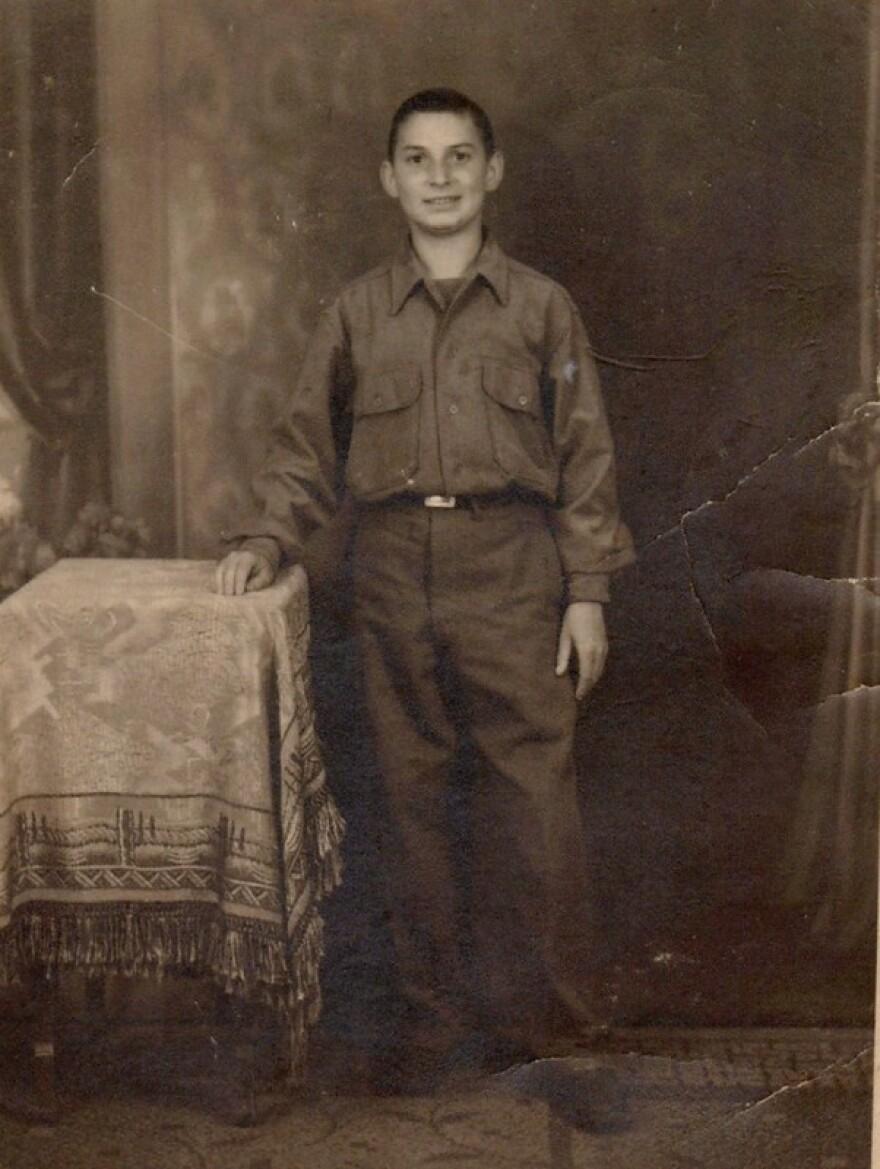As a 14-year-old imprisoned in a satellite camp to Auschwitz in 1944, Ben Fainer crafted a bracelet. “It appears that he worked in a locksmith shop or in a metalworking shop while he was there,” Fainer’s daughter Sharon Berry told St. Louis on the Air.
He engraved the metal with his name (and his mother’s surname, Urman), his ID number and some decorative elements. At that point, he had already been separated from his mother and siblings, all of whom would perish in the Holocaust.

“Here's a 14-year-old boy, surviving the most frightening and horrific of life circumstances,” Berry said, “and I’m sure nobody gave him that piece of metal and said, ‘Here, want to make a piece of jewelry?’”
Yet, he did — likely working on the piece in secret during his imprisonment at the Blechhammer camp.
Before liberation, Fainer was imprisoned in six camps. At some point during the death marches between the camps, or perhaps during intake, the bracelet was lost.
“Did he discard it, knowing that he'd be searched and he just decided to get rid of it on its own? Had it been confiscated and seen as something of no worth and thrown away?” said Dan Reich, curator of the St. Louis Kaplan Feldman Holocaust Museum. “He never spoke about this bracelet, so everything is sort of ‘what's likely to be,’ ‘what could have been.’”
It wasn’t until an archeological excavation five decades later that the bracelet was found in the German soil, and decades after that when someone finally tracked down Berry and shared a photograph of the bracelet with her. At that point, Ben Fainer had been dead for two years.
Berry made a trip to Germany to collect the bracelet. She decided its final resting place should be at the place her father first found the courage to tell his story — the St. Louis Kaplan Feldman Holocaust Museum. Fainer settled in St. Louis in 1957 and years later became an active volunteer for the museum, telling his story to visitors and groups around the region.
Berry donated the bracelet to the museum this month, where it will be part of a permanent exhibition once the facility reopens in 2022.
“The St. Louis community [and] the Holocaust Museum was such a part of my father's life,” Berry said. “It was everything for my father. And the bracelet was my father's. It's my father's story, and it belongs in the museum.”
“St. Louis on the Air” brings you the stories of St. Louis and the people who live, work and create in our region. The show is hosted by Sarah Fenske and produced by Alex Heuer, Emily Woodbury, Evie Hemphill and Lara Hamdan. The audio engineer is Aaron Doerr.







